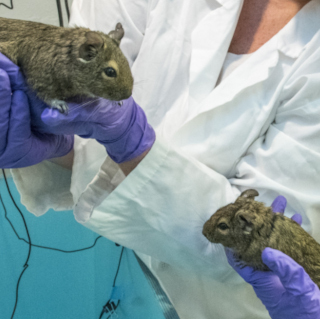Animal Procurement
Last Review Date: August 28, 2020
I. Purpose
This SOP outlines the procedures for procuring animals from both preferred vendors and from other institutions and document management associated with animal procurement
II. Policy
It is LAR policy to meet or exceed all federal, state, and local regulations and guidelines and to comply with all institutional policies and procedures as they apply to the use of animals in research. Personnel must attend any applicable training in animal care and use, occupational health and safety, equipment operation, and SOPs prior to performing activities outlined in this SOP or work under the direct supervision of trained personnel.
II. Responsibility
It is the responsibility of the LAR Staff to accept animals from carriers, complete the required paperwork and filing, and notify the investigator(s) that their animals have arrived.
III. Procedure
The majority of animals procured by UM are from commercial vendors supplying SPF-quality animals. LAR maintains a list of “preferred vendors” that have been evaluated and approved by the Facility Manager or AV. Vendor-supplied health status reports are reviewed regularly by the Facility Manager or AV, and animals ordered from these preferred vendors do not require pre-approval relative to health status. Some in-house breeding occurs, under approved AUPs.
When procuring animals from unapproved vendors or other academic institutions, the Facility Manager requires information about the genetic and pathogen status of the animals in question, as well as the pathogen status of all animals housed in the unapproved vendor facility. The institutions are obliged to provide pertinent information, such as pathogen antibody serology results and parasite screens, before an animal shipment.
The Facility Manager or AV reviews all animal health records in advance of approving shipments of animals. Additional testing, extended quarantine, rederivation may be requested depending on animal health histories, or importation may be rejected. For these animals, there is an animal procurement fee (please contact the Facility Manager for the current fee amount).
Animals from a non-preferred vendor are placed into quarantine in isolation cubicles and examined 48-hr after arrival for ecto- and endoparasites, as well as a PCR swab taken for detection of fur mite DNA. At the end of the 6-weeks quarantine, a PCR swab is repeated for fur mite DNA, and blood is drawn for pathogen antibody serology analysis. PCR and serology are conducted by IDEXX-RADIL.
Other species, including Betta splendens, are evaluated by visual examination and through health reports if available.
IV. Animal Intake Procedures
A. Sign for the animals
1. Write the
2. Put the receipt in the Facility Manager's In Box.
B. Record species, number of animals, date, vendor,
Log (Health Science Office)
C. Find the copy of the order form on the Ordering Clipboard (Health Science Office)
1. Make sure it matches the animals received.
D. Locate the Packing Slip on the animal boxes received
1. Make sure it matches the order form and what was received.
2. Note any extra animals on the order form and transport log.
E. Staple the delivery receipt, animal order form, and the packing slip together and
place in the "Animal Orders Received" file in the cabinet of the Health Science
Building LAR Office.
F. Place Health Records in the "Animal Health Certificate" file (HS 009), if applicable.
G. USDA animal health records are placed in the USDA Records notebook and in the
species-specific animal health records notebook.
H. Email PIs to inform them of their animals have arrived.
I. Unpack animals using the SOP: for "Unpacking Shipping Containers of Live Animals".
V. Acclimation
A. Laboratory Animals
1. Laboratory animals received from preferred vendors will undergo a 72-hour
acclimation period before being used in any IACUC-approved experiment or
procedure.
2. Laboratory animals transferred between the main campus and the Field Station will
undergo a 48-hour acclimation period before being used for any IACUC-approved
experiment or procedure
B. Wild Animal
1. Wild animals captured within the state and transported to the Field Station will
undergo a 48-hour acclimation period before being used in any approved
experiment or procedure.
2. Wild animals captured outside the state and transported to the Field Station will
undergo a 72-hour acclimation before being used in any approved experiment or
procedure.
